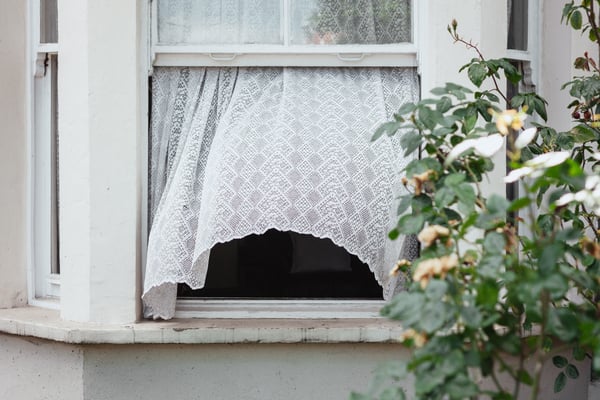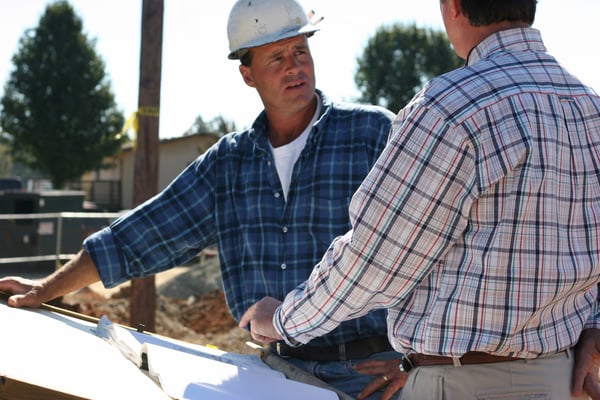Measuring the radon levels in your home is key to keeping everyone inside safe, and the only way to measure the levels is with a radon detector.
What is an acceptable radon level can vary from one country or state to the next, and those acceptable levels will depend on the type of rocks and soil that are beneath your home and the time you spend inside.
However, there is one thing that remains universal: radon is the second leading cause of lung cancer.
About 21,000 people die every year from radon-related lung cancer in the United States.
That's reason enough to find if you and your family are being exposed to excessive levels of the dangerous gas.
Radon levels can fluctuate daily, so you need to get a long-term test for your home or monitor your levels daily.
Many people don't know how dangerous radon can be. For more information read our blog post: "Radon Gas Really is Dangerous... and There's Science to Prove It." here.
In the article below, we will discuss exactly what the radon levels are and what it means for you and your family.
Have more questions? Read our blog post: "8 Frequently Asked Radon Gas Questions."
Table of Contents
- Radon Level Measurement Units
- Safe Radon Levels
- Healthy Radon Levels
- Areas with High Radon Levels
- Ensure The Health and Safety of Your Family
Radon Level Measurement Units
Radon is generated by the radioactive decay of radium, and element that was initially discovered in 1898 by Pierre Curie, Marie Curie, and G. Bemont.
All radioactive elements are unstable and always in a constant struggle deciding whether to hold onto all of their atomic energy in the nucleus or release some of it.
The decay of the nucleus releases radiation.
One curie is equal to the radioactivity o one gram of radium, which decays at 2.2 trillion disintegrations per minute.
Picocuries per liter of air, or pCi/L, is one of the preferred measurements for the speed of decay in radon is equal to one trillionth of a curie, abbreviated as pCi.
The pCi unit is used in the United States because it's required by federal law.
Just about everywhere else in the world that uses the metric system measures in Becquerels. 1pci?l is equal to 37 Bq/m3.
The Becquerel unit, abbreviated Bq, is named after founder Henri Becquerel.
The preferred radon level measurement unit is Becquerels per cubic meter, Bq/m3.
One Becquerel equals one radioactive disintegration per second.
Safe Radon Levels
In a perfect world, your radon level measurement would be zero.
Unfortunately, we don't live in a perfect world, and a measurement of zero isn't possible.
The average global outdoor radon level varies between 5-15 Bq/m3, or 0.135-0.405 pCi/L.
For every 99.9 Bq/m3, or every 2.7 pCi/L increase in long term radon exposure, lung cancer risk rises 16 percent.
The thing to remember that the lower the radon level, the lower the risk.
As radon gas accumulates indoors, it is important to monitor daily.
The WHO states that the majority of lung cancers are caused by low to moderate radon concentrations die to the fact that a fewer number of people are exposed to very high indoor concentrations.
Healthy Radon Levels
The answer to the question of what a healthy radon level is has been highly disputed.
Zero is the natural answer, but since radon is a naturally occurring radioactive gas, zero is impossible.
Acceptable levels of radon will vary depending on the country you live in.
The WHO has established a generally accepted action level at 2.7 pCi/L.
If your home measures higher than this, you are advised to take remedial action to lower your levels.
The WHO further advises an upper limit that should not exceed eight pCi/L.
In the U.S., the EPA has set its action level at four pCi/L, a little higher than the action level of the WHO.
It's estimated that 2/3rds of all homes in the U.S. exceed the recommended action level, and it is also believed that reducing radon levels below four pCi/L would cut yearly cancer deaths from radon in half.

Areas With High Radon Levels
In most cases high radon levels can be fixed easily and simply by following easy radon reduction tips, increasing ventilation, performing DIY fixes or contacting a radon mitigator.
Radon gas occurs everywhere around the world as it escapes from the breakdown of uranium in igneous rock and underground water and seeps up into the earth's surface.
The gas is odorless, colorless, and tasteless, making it extremely difficult to detect.
Just by walking around outdoors you are exposing yourself to low levels of radon gas, but some countries have it worse than others.
High radon levels have been detected in every country in just about every location on the planet.
It's important to remember that the radon gas we come into contact with outdoors generally isn't a problem.
When the gas accumulates indoors is when the problems arise.
When that happens you need to be sure your home maintains safe levels of radon gas.
The only way to know if your home is safe is to have it tested.
Ensure The Health and Safety of You and Your Family
Most people have no idea they've been living in a home with elevated levels of radon until it's too late.
That news usually comes along with a lung cancer diagnosis.
Luckily, testing is readily available so you can find out if your home has elevated levels and then tackle the problem head-on if it does.
Radon Eliminator is a radon testing and mitigation company that will come to your home and tests the radon levels inside.
If your levels are elevated, they will tell you about radon mitigation systems that will bring your levels back to safety.
To make sure you and your family aren't at risk, click the button below to get started with Radon Eliminator.






